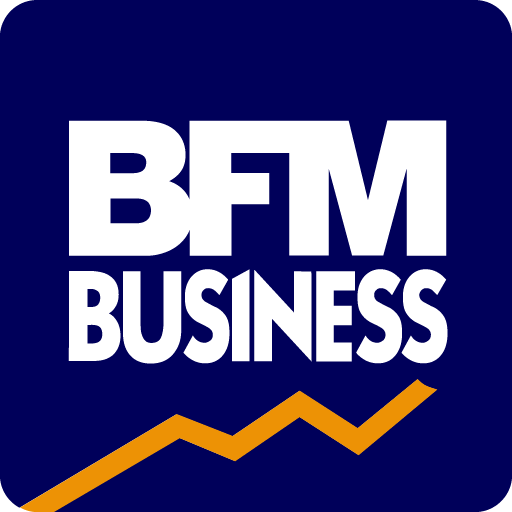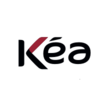Summary of our market study
The global market for sporting events is estimated at $250 billion.
The sports economy in France represents 2.6% of the country's GDP. French household spending on sport exceeds 21 billion euros.
France organizes recurring events such as the French Open (600,000 visitors), the 24 Hours of Le Mans (300,000 spectators), the Tour de France and soccer championships (between 8 and 10 million spectators), as well as one-off events such as the Euro soccer championships, the Rugby World Cup in 2023 and the Paris Olympic Games in 2024.
Event sponsorship accounts for over 43% of revenues.
The market also includes rapidly evolving segments such as digital broadcasting and e-sports.
Key players
- Amaury Sport Organisation (ASO) With the Tour de France, Paris-Roubaix and the Dakar Rally, ASO not only dominates cycling and motor sports, but also influences the media through its sports newspaper, L'Équipe.
- Lagardère Sports (now part of H.I.G. Capital) plays an important role in negotiating contracts with international sports organizations and in shaping the marketing dynamics of sports sponsorship and advertising.
- GL Events manages venues and participates in the organization of large-scale trade shows and conventions, including sporting events.
to understand this market
Detailed content of our market study
 Inforamtion
Inforamtion
- Number of pages : 35 pages
- Format : Digital and PDF versions
- Last update :
 Summary and extracts
Summary and extracts
1 Market overview
1.1 Presentation and definition of the French sports events market
A sporting event can be defined as a demonstration of sporting performance organized in a specific place, limited in time, covered by the media and involving various types of spin-offs, notably in terms of marketing, advertising, television rights and economic benefits for the country.and involving various types of spin-offs, notably in terms of marketing, advertising, television rights and economic benefits for the country. The aim is to create the widest possible media coverage and economic spin-offs around a sport.
Little affected by economic crises, the global sports market is characterized by both rapid and cyclical growth, based on the organization of major media events. These events represent real economic and sometimes even geopolitical stakes for the host countries. Hosting major sporting events is an opportunity to showcase a country, not only in sporting terms, but also in terms of tourism, culture and the economy, with an increased contribution to job creation (mainly temporary) and the collection of substantial tax revenues.The global sports events market was estimated at $184.61 billion in 2021, and is expected to grow at a CAGR of 10.5% to 2031.
In France, the market is relatively dynamic, driven by the organization of recurrent international events such as Roland-Garros and the Tour de France, and the more exceptional organization of events such as the Euro Football Championship in 2016, the Rugby World Cup in 2023, and the 2024 Olympic Games in Paris.the market is also structured around a number of major players in event organization (ASO, OC Sport...), event sponsorship (the commitment of BNP for tennis, or Red Bull for extreme sports, for example) and public authorities, which are often decisive in enabling an event to take place (organization and financial support).
As is the case worldwide, market growth is also being driven by therise of digital broadcasting, already popular sports and disciplines, and new practices such ase-sport. The digital broadcasting segment is of growing interest to GAFAs, who are in direct competition with traditional market players.
1.2 A booming global market structured around numerous international players
The global sports events market was estimated at $***.** billion in **** , and is expected to grow at a CAGR of **.*% to ****.
Global sports events market growth projections World, **** - ****, in $ billions Source: ****
The sporting events sector is seeing the emergence of new events that are just as attractive, changing trends and putting organizers under pressure (***). The sector is also seeing the arrival of new, independent competitors who are using technology to stand out in today's highly competitive market.
Ticket sales for professional sporting events, whether online or in person, are a major branch of this sector. The growth of this industry is propelled by improving economic conditions and rising disposable incomes. Although the global economy came to a standstill following the **** crisis in Europe and China, it has since enjoyed a robust recovery, especially in emerging economies, increasing the purchasing power of the middle classes and expanding their proportion of the overall population[***].
The sports events market is experiencing dynamic growth, mainly propelled by the intensification of event sponsorship. Companies seek to maximize product visibility and target a wide audience, exploiting events as strategic advertising platforms. Sporting events, for example, all benefit from sponsors, who accounted for **.*% of their revenues in ****. At ...
1.3 A very dynamic French sports events market
The French sports event organization sector boasts a remarkable economic dynamic. According to BPCE L'Observatoire, the French sports economy accounts for *.*% of GDP, representing sales of ** billion euros generated by companies in the sector.
The sports economy in France has seen several fluctuations between **** and ****, with moments of growth followed by periods of slowdown due to crises such as the COVID-** pandemic. Here is a summary of the data available for this period:
- In ****, household spending on sport fell significantly by **.*% due to pandemic-related restrictions, dropping to **.* billion euros. That year, the share of this expenditure in GDP was *.*%, with public administrations also contributing *.* points of GDP to sport[***]. In ****, the market for the organization of sporting events would be worth around **.* million euros, without taking into account all expenses such as broadcasting rights, sponsorship...
- In ****, an upturn was observed, with household spending on sport rising by **.*% to **.* billion euros, maintaining its *.*% share of GDP. Government spending on sport also increased by *.*%, totaling **.* billion euros, or *.* points of GDP[***]. The size of the sports event organization market in that year would then be **.* million euros.
change in the size of the French sports event organization market France, **** - ****, in ...
1.4 Examples of the Paris 2024 Olympic Games and Euro 2016 soccer tournament
Focus on the Paris **** Olympic Games:
The Paris **** Olympic and Paralympic Games are a major project financed mainly by private funds. Indeed, **% of the organization's budget is covered by private revenues, including the contribution from the International Olympic Committee (***), corporate partnerships, ticketing revenues and licenses. the Games Organizing Committee's budget amounts to *.*** billion euros, with an IOC endowment of *.* billion euros, ticketing revenues estimated at *.* billion euros, and partnerships contributing *.*** billion euros. only *% of funding comes from public sources, specifically earmarked for the organization of the Paralympic Games[***].
Details of financing for the Paris **** Olympic Games France, ****, € billion Source: ****
The event is also seen as a significant economic driver for France. The Games are expected to create major economic opportunities, with an estimated ***,*** jobs mobilized over * years and the publication of thousands of public contracts totaling over €* billion. These contracts cover various sectors such as construction, organization and tourism, and aim to ensure equal opportunities for all economic players wishing to participate in the success of the event.
As for the expected economic spin-offs, they are significant. The Games are likely to stimulate the economy through tourism, international visibility and investment in infrastructure. Although specific figures on attendance and economic spin-offs ...
2 Demand analysis
2.1 Different notoriety levels depending on the type of sporting event
According to an awareness survey conducted by Sponsoring, almost * out of ** French people are aware that France will be hosting the **** Summer Olympics in Paris. However, only **% are aware of the organization of the **** Paralympic Games.
Did you know that France will organize... France, between **** and ****, in % Source: SponsoringSponsoring Panel question: "Between **** and ****, France will be hosting various international sporting events. Did you know that France will be hosting..." * the European Athletics Championships in Paris from August ** to **, **** * the European Women's Handball Championships in December **** * the Alpine Skiing World Championships in Courchevel-Méribel in February **** * the European Women's Artistic Gymnastics Championships in Paris in April and May **** the European Men's Volleyball Championships from September ** to **, ****
Not all sporting events enjoy the same notoriety and popularity among the French. The Olympic Games, however, enjoy particular attention from the French. In fact, in ****, the France Télévisions channels dedicated to the Beijing Olympic Winter Games (***) attracted the attention of almost ** million French people, or **% of the population, who watched at least one minute of their broadcasts. This figure is slightly lower than that for the Summer Olympics in Tokyo in ****, which were watched by ** million people. Disciplines newly introduced for the Paris ...
2.2 Différents niveaux de notoriétés selon le type d'événement sportif
Selon une étude de notoriété réalisée par Sponsoring, près de * Français sur ** sont au courant que la France organisera les JO d’été **** à Paris. Ils ne sont pour autant que **% à être au courant de l’organisation des Jeux Paralympiques ****.
Savez-vous que la France va organiser… France, entre **** et ****, en % Source : Sponsoring Question posée au panel : " Entre **** et ****, la France va organiser différents évènements sportifs internationaux. Savez-vous que la France va organiser… " * les Championnats d'Europe d'athlétisme à Paris du ** au ** août **** * les Championnats d'Europe de handball féminin en décembre **** * le Championnat du monde de ski alpin à Courchevel-Méribel en février **** * les Championnats d'Europe de gymnastique artistique féminine à Paris en avril et mai **** les Championnats d'Europe de volley masculin du ** au ** septembre ****
Ainsi, les différents événements sportifs ne jouissent pas tous de la même notoriété et de la même popularité chez les Français. Les Jeux Olympiques bénéficient toutefois d'une attention particulière de la part des Français. En effet, en ****, les chaînes de France Télévisions consacrées aux Jeux Olympiques (***) d'hiver de Pékin ont attiré l'attention ...
2.3 A positive reception from the French for the organization of international competitions
The French are less and less enchanted by the idea of hosting major international sporting events. Those whose daily lives will be impacted by these events are the least satisfied, as the example of the Paris **** Olympic Games shows. Indeed, people living in the Paris region are much less enamored with the idea of hosting the Olympics than the rest of the French population.
Paris will host the next Olympic and Paralympic Games in ****. For you, is this... ? France, ****, in Source: ****
Thus, **% of French people consider the hosting of the next Olympic Games to be a bad thing, a figure that is steadily rising.
Percentage of French people who consider hosting the Olympic Games to be a good thing France, **** - ****, in Source: ****
In fact, only **% of French people consider the organization of these Games to be a good thing. This share has dropped ** points in two years.
Paris will host the next Olympic and Paralympic Games in ****. For you, is this... ? Île-de-France, ****, in Source: ****
Ile-de-France residents are even less seduced by the idea of hosting the Games in the summer of ****, as **% consider it a bad thing, ** percentage points more than for France as a whole. This figure has also ...
2.4 The rise of digital viewing of sporting events
New digital channels such as computers, tablets and smartphones are increasingly competing with the media that traditionally broadcast sporting events. According to the CNDS, the classic model of a single broadcast on a given channel is gradually being replaced by a model of "targeted information flows" that adapt to viewer preferences. In France, * out of ** Internet users are "passionate about sports information on their computer screen", making France the world champion in terms of digital visits to sports sites, according to the same source.
French demand for sporting events is characterized by a growing demand for ease of access and personalization of the content viewed, with more and more young French people multiplying the number of interfaces for viewing sporting events. According to a Google study reported by Les Echos, **% of Millenials use a phone at the same time as watching the Superbowl game. These new requirements call for ever greater adaptability on the part of sports event organizers, particularly in terms of mastering the new technologies that enable the events in question to be broadcast.
The sports market is undergoing a digital revolution, as cinema did before it, with streaming platforms such as Netflix and Amazon Prime Video playing a ...
2.5 New sports practices and new players
The French market is the scene of several fundamental trends, including the arrival of new sports, mechanically correlated with the emergence of new players who are disrupting the market.
The rise of streaming encourages the emergence of new disciplines: e-sport
E-sport is also entering the game. The **** edition of the France Esports Barometer shows that the number of Internet users aged ** and over interested in esport has increased by * million compared to ****, reaching **.* million. Of this total, *.* million watch only video game competitions, down *.* million on the previous year. By contrast, the number of people who both play and watch esports rose by *.* million to *.* million. The number of people who only take part in video game competitions remains stable at *.* million. This data indicates a growing trend among esport players to also watch these competitions.
Following the lifting of government restrictions on public attendance in ****, physical competitions have resumed, to the delight of fans, LAN players and spectators of major events. The trend observed since the previous year is confirmed: competitions with a physical presence are gaining ground on online competitions. In ****, just under half (***) took part in both types of competition, a slight increase of * point.
Where do e-sport ...
2.6 Une audience massive pour les Jeux de Paris 2024
Les Jeux olympiques et paralympiques de Paris **** ont rassemblé une audience exceptionnelle, bien au-delà du cercle des passionnés de sport. D’après l’INJEP, ** % des Français de ** ans et plus ont suivi au moins une compétition des JO, et ** % ont regardé les Jeux paralympiques. La quasi-totalité de ce public y a accédé par les médias traditionnels(***), avec ** % des spectateurs des JO et ** % de ceux des JP ayant utilisé ce mode de suivi. En revanche, la présence physique sur les sites de compétition reste plus restreinte : * % pour les JO et * % pour les JP. Les fan-zones ont attiré seulement * % du public global, confirmant que la télévision reste le mode d’accès privilégié à ces événements.
Mode de suivi des Jeux de Paris France, ****, en % Source: ****
L’intensité du suivi varie fortement selon le sexe. Chez les hommes, ** % déclarent avoir suivi les JO de façon quotidienne ou très régulière, contre ** % des femmes. À l’inverse, les femmes sont plus nombreuses à ne pas avoir suivi les JO du tout (***). Cette différence illustre une forme d’inégalité dans le rapport au spectacle sportif, déjà observable dans d’autres ...
3 Market structure
3.1 A market divided between public, association and private players
A multitude of players are present in the sporting events market. The Centre National pour le Développement du Sport (***) has mapped out the value chains involved in sports events, distinguishing between public players, private players and sports associations:
Public players: on a national scale, these players are the State and specialized agencies (***) act on a local scale. The main aim of these players is to promote the development and accessibility of sporting activities. They co-finance, control and coordinate the organization of sporting events; Sports associations: this category includes international sports federations (***). The role of these players includes qualifying athletes and defining competition rules; Private players: their main aim is to create economic value and generate profit from the organization of these events.they include national event suppliers (***) and local event suppliers.
France boasts substantial, internationally recognized expertise in the organization of sporting events, so the national market is growing and relatively resilient. The strengths of the national sports events market include
Experience and professionalism across the entire value chain, coupled with the mobilization of numerous French players, enabling the organization of a wide variety of events; The support of public authorities, notably in the form of subsidies (***), represents a major ...
3.2 The sports events value chain
Organizing a sporting event, whatever its size, requires a sound knowledge of sports management to enable the various stages of the process to be rationalized and rigorously structured. These are described in the publication Organizing a sports event by M. Desbordes and J. Falgoux, and can be summarized as follows:
The different stages in organizing a sporting event
Source: ****
As emphasized by M. Desbordes, marketing strategy is a key stage in the design of a sporting event. It is based on a precise and rigorous analysis of the quantitative and qualitative aspects of the project: the guiding idea - in other words, the theoretical basic plan - must be supported by a concrete and rational positioning, backed up by an analysis of all the costs and benefits, enabling the profitability of the project to be judged.
at each stage of this organization, a multitude of players come into play, each positioned on a precise aspect of the project: financial, commercial, logistical, administrative, sporting, regulatory, etc. :
Source: ****
3.3 Increase in the number of employees and companies involved in the organization of sporting events
The organization of sporting events is recorded by INSEE under NAF code"**.** Other sports-related activities". However, this category is broader and includes :
the activities of producers or promoters of sporting events, whether or not they have their own facilities; the activities of professional athletes, referees, judges, timekeepers, etc. ; the activities of sports leagues and regulatory bodies; activities related to the promotion of sporting events; the activities of racehorse stables, greyhound kennels and racing car stables; the operation of fishing and hunting reserves; the activities of mountain guides; activities in support of sport or recreational fishing and hunting.
Workforce and establishments in other sports-related activities (***) France, ****-****, in units Source: ****
The number of establishments rose across the board, with average annual growth of *.**%. The year with the strongest growth was ****, with an increase of **.**%. The number of employees also showed an upward trend, with average annual growth of *.**%. The most significant growth was observed in ****, when headcount rose by **.**%. These trends indicate sustained expansion in terms of both physical structure and human capital, with a notable acceleration in the last few years analyzed.
This trend can be explained both by a higher number of sporting events and by larger-scale sporting events. The ...
3.4 Une structuration polarisée autour de quelques grands acteurs
Si l’on s’intéresse à la structure globale de l’économie du sport, dans laquelle s’inscrit le marché de l’organisation d’événements sportifs, on observe une forte polarisation entre un très grand nombre de petites structures et un nombre réduit d’acteurs concentrant la majorité du chiffre d’affaires.
D’après le Panorama de l’économie du sport (***), le secteur compte environ *** *** entreprises, dont :
*** *** structures sans salarié, souvent des auto-entrepreneurs ou microstructures locales ; * *** PME, ETI ou grandes entreprises, soit *,* % du total, mais représentant ** % du chiffre d’affaires du secteur, soit environ ** milliards d’euros sur les ** milliards générés
Répartition des entreprises dans le secteur économique du sport France, ****, en nombre d'entreprises Source: ****
Une très grande majorité d’acteurs ont donc un poids économique marginal, alors qu’une minorité détient les clés du marché.
Ce déséquilibre révèle une économie éclatée dans sa forme mais concentrée dans sa réalité économique. Une logique qui se retrouve dans le marché spécifique de l’organisation d’événements sportifs : ce segment, bien qu’inscrit dans une catégorie plus large (***), est marqué ...
3.5 Une dynamique portée par les Grands Événements Sportifs Internationaux (GESI)
Les grands événements sportifs internationaux jouent un rôle structurant dans l’économie du sport en France. Au-delà de leur impact symbolique, ils agissent comme de puissants leviers économiques, attirant des investissements, stimulant la demande et professionnalisant les acteurs du secteur – y compris ceux spécialisés dans l’organisation d’événements.
Le Panorama de l’économie du sport **** réalisé par Bpifrance met en lumière cette dynamique. Selon cette étude, les Jeux Olympiques et Paralympiques (***) de Paris **** sont perçus comme une opportunité par ** % des entreprises du secteur, témoignant de l’effet d’entraînement que ces événements suscitent. Cela inclut aussi bien les acteurs du marketing sportif que ceux de la logistique, de la billetterie, de la gestion de flux ou de la production audiovisuelle – autant de métiers centraux dans l’organisation d’événements.
Estimation des retombées économiques des JOP Paris **** France, ****–****, en % Source: ****
Par ailleurs, le Centre de droit et d’économie du sport (***) estime que les retombées économiques des JOP devraient se situer entre *,* et ** milliards d’euros, sur la période ****-****. ** % de ces retombées concernent l’organisation même des Jeux, directement reliée à notre ...
4 Offer analysis
4.1 Characterization of sporting events in France
According to the French Ministry of Sports, the sports events sector in France can be segmented along two main axes:
firstly, the level of media coverage of the event: a high-profile event will thus be considered "general public", while a less high-profile event will be reserved for an audience of insiders; secondly, the recurrence of the event: the greater the recurrence, the more the event will be considered "emblematic" of the French sporting landscape. conversely, one-off events will be considered rarer, and will be all the more recognized the larger the audience they attract.
on the basis of these two axes, we can therefore distinguish four categories of event in the sports events market, represented in the diagram below from the CNDS report:
Pale orange bubbles refer to events taking place in a stadium, while darker bubbles refer to events taking place outside a stadium. Larger bubbles refer to events attracting more than ***,*** spectators, medium-sized bubbles to events attracting between ***,*** and ***,*** spectators, and smaller bubbles to events attracting fewer than ***,*** spectators.
4.2 Examples of sporting events organized in France
Here is a table listing some of the biggest sporting events that are held regularly in France or have taken place exceptionally, including their frequency:
Some of these events stand out, either positively or negatively. For example, the ****-**** Champions League Final, originally scheduled to take place in Ukraine, was held at the Stade de France, and left a lasting impression thanks to its chaotic turn of events. Many spectators were blocked at the entrance to the stadium, tear gas was used and attempts to break in by climbing over barriers were reported. These incidents resulted in a thirty-six minute delay to kick-off[***].
This disastrous experience was relayed by numerous international media outlets, calling into question France's ability to host major international sporting events, primarily targeting the Olympic Games planned for Paris in ****. Thus, the Rugby World Cup **** served as a test case for the Olympics, providing valuable lessons on the robustness of the security system, the efficient management of flows and transport after the initial adjustments of the first weekend of competition, as well as the capacity to reactively coordinate a heterogeneous set of players, such as local authorities, operators, volunteers, private security agents and civil protection associations, in the ...
4.3 Prices vary widely according to competition type and discipline
Variable prices within the same competition:
For the ****-**** season, it was cheaper to see a Ligue * soccer "top match" in a stadium in France than in Italy, Germany or England. According to the Sofoot website, the average price to attend a Ligue * "top match" is €**.
Even within the French leagues, prices vary widely. For the least attractive matches, the cheapest price in Ligue * this season is less than €**, compared with €** in Serie A or €** in the Premier League. on the other hand, for the most popular matches, and to see teams featuring popular players such as Paris Saint-Germain (***) or Olympique de Marseille, fans may have to fork out as much as €***.
Euro **** example:
According to UEFA, ticket prices to attend Euro **** matches in France were logically increasing as the competition progressed. However, price segments appeared according to the seat category present in the stadium, with ratios of * to ** for the final and * to * minimum for the other phases of the competition between the cheapest and most expensive tickets.
Ticket prices for UEFA European Football Championship matches, by category and tournament progress France, ****, in euros Source: ****
Example of the Paris **** Olympic Games:
Prices for the Paris Olympics obviously depend on the ...
4.4 Vers une montée en gamme de l’offre : l’hospitalité premium, nouvel horizon de l’événementiel sportif
Longtemps cantonnée aux loges et salons d’entreprises dans les enceintes sportives, l’hospitalité dans les événements sportifs connaît, avec les Jeux Olympiques de Paris ****, un changement d’échelle sans précédent. Pour la première fois, un événement sportif international propose une expérience haut de gamme totalement intégrée, déployée au cœur de la ville et pensée comme une offre complète mêlant sport, art de vivre à la française et personnalisation extrême.
Un modèle inédit porté par On Location
Fournisseur officiel du Comité d’organisation de Paris ****, la société américaine On Location a développé une gamme d’offres d’hospitalité premium sans équivalent dans l’histoire des Jeux, selon les mots mêmes de son PDG Paul Caine (***). L’entreprise propose trois grandes familles de prestations :
Offres classiques en loge ou salon, situées dans les enceintes sportives traditionnelles ; Expériences “hors-stade”, mêlant lieux iconiques et prestations de réception dans des espaces tels que le Palais de Tokyo (***) ; Packages sur mesure, incluant transport, hébergement, restauration gastronomique, accès VIP aux cérémonies et prestations culturelles annexes (***). [***]
À ...
4.5 Développement des infrastructures sportives : une opportunité pour les acteurs de l’événementiel sportif
Le développement d’infrastructures sportives constitue un levier stratégique majeur pour les acteurs du marché de l’organisation d’événements sportifs. Bien qu’initiés par des clubs ou institutions publiques, ces projets s’inscrivent dans une dynamique favorable à l’ensemble de la filière, en créant de nouveaux lieux d’accueil, de nouveaux formats événementiels et des opportunités d’ancrage territorial.
Un boom mondial des investissements
Selon Deloitte (***), plus de *** stades à travers le monde seront en cours de construction ou de rénovation en ****. L’Europe est particulièrement dynamique, notamment dans le football, avec un objectif clair : séduire une nouvelle génération de spectateurs et diversifier les revenus. Cette transformation vise à répondre à une double logique :
Retour sur investissement pour les acteurs privés Impact socio-économique positif pour les collectivités locales
Des stades repensés comme pôles de vie
Ces projets d’infrastructures dépassent désormais le cadre sportif. Le stade devient un point d’ancrage urbain et social, où l’on vient vivre des expériences culturelles, gastronomiques et communautaires. Exemple emblématique : le projet « Sports Quarter » à Birmingham, estimé entre * et * milliards de livres, qui prévoit ...
5 Regulations
5. Regulations governing the organization of sporting events
The organization of a sporting event is subject both to the regulations applied to all types of public events and to specific specific rules and regulations (***), which are described in detail on the Ministry of Sports website:
The sporting event in question must be declared to the local administrative authorities (***), as well as to the delegated sports federations involved; The organizer must take out civil liability insurance to cover participants, employees, volunteers and other parties involved in organizing the event (***); Numerous obligations apply to safety at sporting events: medical certificates for participants, compliance of sports equipment with current standards, presence of a security service, drawing up a rescue plan in the event of an emergency, and so on. These rules are all the more stringent today, given the high risk of terrorist attack at this type of event. The organization must also comply with environmental regulations. This is particularly the case for sporting events taking place on or near sites classified as "Natura ****" biodiversity protection areas, which require prior study and assessment of the impact on the site.
6 Positioning the players
6. Segmentation of market players
6.2 Oeil de l'analyste
Contexte :
Le secteur de l’événementiel sportif s’appuie sur une forte concentration géographique : l’Île-de-France (***) comme les JO **** structurent durablement l’activité économique, générant ** % des retombées prévues à l’échelle nationale entre **** et ****.
Grandes tendances :
*re tendance : Un poids économique significatif de l’événementiel sportif.En ****, les activités liées à l’événementiel, aux médias et aux services représentent ** % du chiffre d’affaires de l’économie du sport en France. Ce niveau place ce segment au troisième rang derrière la vente d’articles et la production de biens sportifs, confirmant son rôle structurant dans l’écosystème global du secteur.
*e tendance : Une pratique régulière du sport en progression continue.Entre **** et ****, la part de Français pratiquant une activité physique au moins une fois par semaine est passée de ** % à ** %. Cette hausse régulière témoigne d’un ancrage croissant du sport dans les habitudes de vie, avec un niveau de pratique globale qui atteint désormais ** % de la population.
*e tendance : Une opinion publique française partagée face aux grands événements.** % des Français jugent positive l’organisation ...
- Amaury Sport Organisation
- TV Sport Events
- OC Sport (Groupe Télégramme)
- LV Organisation
- Lagardère Sports and Entertainment
- Eurosport Event (TF1)
- Groupe Figaro
- CIO
- FIFA
- UEFA
- Adidas
- Sodexo France
- Artea Events
- AEG Anschutz
- Alive Groupe
- Nike
- Red Bull
- Télégramme Groupe
- Action Developpement Loisir
- Actua Organisation
- Aqua Nantes
- Aqua Val
- Aquamotion
- Basic Fit Ii
- Bassin Bleu Country Club
- Black Ken
- Blue Green
- Blue Green Golf De Lyon Chassieu
- Bowling 3000
- Bowling Du Hainaut
- Brest'Aim
- Bretigny Fd
- Climb Up Bouc Bel Air
- Cnmc (Sté Anonyme D'Economie Mixte Sportive Du Circuit De Nevers Magny Cours)
- Complexe Aquatique De L'Atlantique
- Daniel Menguy
- David Lloyd Clubs France
- Dg Developpement
- Dg Finance
- Dms
- Egb
- Elisa
- Elisa Gestion
- Equalia
- Espace Vertical
- Excelis
- Exploitation Du Bowling
- Fc Girondins De Bordeaux (Fcgb)
- Firma
- Fitness Park Paris
- Formule Golf
- Glc Fitness
- Gold
- Golf Club Du Gouverneur
- Golf De Lyon Verger
- Golf De Rebetz
- Golf De Seignosse
- Golf Des Baux De Provence
- Golf Du Beaujolais
- Golf Du Luberon
- Golf Et Tourisme
- Golf International De Pont Royal
- Golf International De Soufflenheim Baden Baden
- Golf Ocean 17
- Golf Resorts Provence Sainte Baume
- Golf Saint Apollinaire
- Golf Up
- Golfy Club Reseau
- Grand Resort France
- Gymlet
- Henin Bowl 62
- Homco
- Olympique Lyonnais
- Om Operations
- Paris Country Club
- Paris International Golf
- Piscine Davout
- Prises En Main
- S Pass
- Sa Des Golfs D'Hardelot
- Sa Du Golf De Bussy Saint Georges
- Sa Du Golf De L'Ile Fleurie
- Sarl Du Golf Dupont Et Fils
- Semop Du Loup Pendu
- Snc La Vague
- Snml
- Sogenor (Sté Gestion De La Norma)
- Sté D'Amenagement Du Golf D'Esery
- Sté D'Economie Mixte Du Circuit Paul Armagnac (Sempa)
- Sté D'Exploitation Du Golf Du Vaudreuil
- Sté D'Exploitation Du Palais Omnisports De Paris Bercy
- Sté De Gestion De Val D'Isere
- Sté De Gestion Des Equipements De La Vallee Des Belleville Sogevab (Sogevab)
- Sté Du Dinard Golf
- Sté Du Golf De Saint Donat
- Sté Expl Base Plein Air De Temple S Lot
- Sté Fonciere De Joyenval
- Sté Nouvelle Du Golf Du Chateau De Cheverny
- Sté Nouvelle Souillac Golf & Country Club
- Stade Bordeaux Atlantique
- Team Actual
- Tech 3
- Troon
- Urban Loisirs
- W Club Grigny
- Waterform
- Wellness Training
- White Ken
All our studies are available online in PDF format
Take a look at an example of our research on another market!
 Choosing this study means :
Choosing this study means :
Access to more than 35 hours of work
Our studies are the result of over 35 hours of research and analysis. Using our studies allows you to devote more time and added value to your projects.
Benefit from 6 years' experience and over 1,500 industry reports already produced
Our expertise enables us to produce comprehensive studies in all sectors, including niche and emerging markets.
Our know-how and methodology enable us to produce reports that offer unique value for money.
Access to several thousand articles and paid-for data
Businesscoot has access to all the paid economic press as well as exclusive databases to carry out its market research (over 30,000 articles and private sources).
To enhance our research, our analysts also use web indicators (semrush, trends, etc.) to identify market trends and company strategies. (Consult our paying sources)
Guaranteed support after your purchase
A team dedicated to after-sales service, to guarantee you a high level of satisfaction. +44 238 097 0676
A digital format designed for our users
Not only do you have access to a PDF, but also to a digital version designed for our customers. This version gives you access to sources, data in Excel format and graphics. The content of the study can therefore be easily retrieved and adapted for your specific needs.
 Our offers :
Our offers :
the market for the organisation of sporting events | France
- What are the figures on the size and growth of the market?
- What is driving the growth of the market and its evolution?
- What is the positioning of companies in the value chain?
- Data from several dozen databases
Pack 5 études (-25%) France
- 5 études au prix de 74 €HT par étude à choisir parmi nos 1200 titres sur le catalogue
- Conservez -25% sur les études supplémentaires achetées
- Choisissez le remboursement des crédits non consommés au terme des 12 mois (durée du pack)
Consultez notre catalogue d’études sectorielles


















